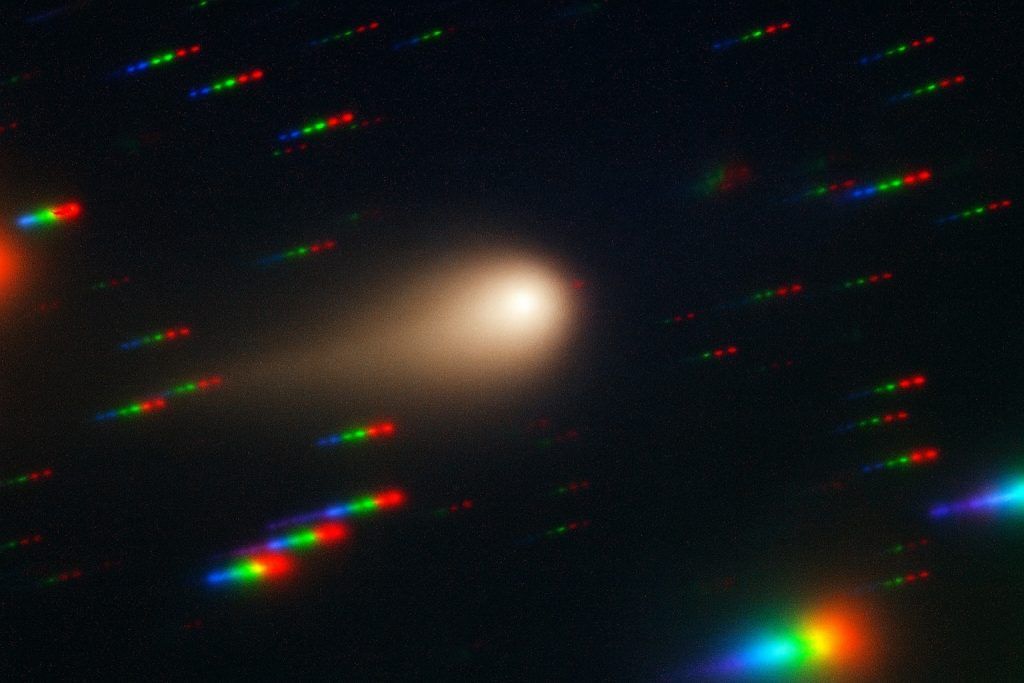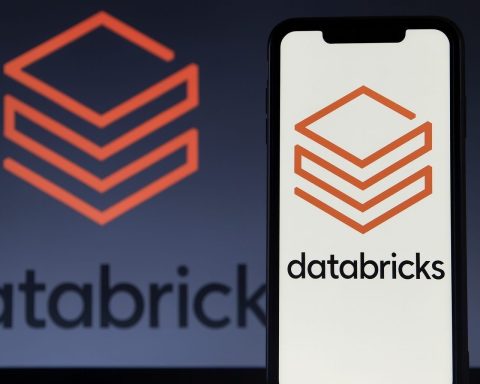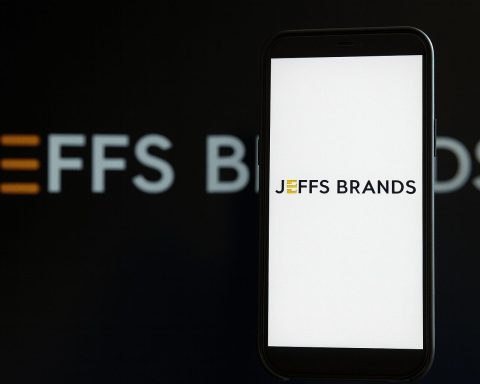- Global Debut: Oppo launched its new Find X9 and Find X9 Pro globally on October 28, 2025 at an event in Barcelona, marking its biggest premium phone release of the year [1]. The phones were first unveiled in China earlier this month and will reach Europe and other markets by early November. India launch is expected soon [2].
- Massive Battery Life: The Find X9 Pro packs a colossal 7,500mAh battery (the standard X9 has 7,025mAh), making them two of the longest-lasting smartphones on the market [3]. A reviewer reported the X9 Pro lasted up to 3 days on a charge (with some settings off), an unprecedented endurance for a flagship device [4]. Despite the huge batteries, Oppo kept the phones surprisingly slim – they’re actually thinner than an iPhone 17 Pro, thanks to new silicon-carbon battery tech [5].
- Camera Innovation: Co-engineered with legendary camera maker Hasselblad, the phones boast cutting-edge quad cameras. The X9 Pro introduces a 200MP periscope telephoto lens (3× optical zoom) with a large sensor for stunning zoom shots [6] [7]. Both models feature triple 50MP main/ultrawide/tele cameras using big Sony sensors, plus an advanced color sensor for more accurate imaging [8] [9]. An optional Hasselblad “Teleconverter” lens kit can magnetically attach to the X9 Pro to achieve 10× optical zoom (up to 200× digital), effectively turning the phone into a super-zoom camera; Oppo says this pro-grade lens kit will be sold separately for around €499 [10].
- Top-Tier Performance: These are Oppo’s first flagships powered by MediaTek’s new Dimensity 9500 5G chipset – a 3nm octa-core chip that rivals the latest Qualcomm and Apple processors [11]. Early impressions suggest performance is blazing fast: “apps open instantly, multitasking is fluid, and even heavy tasks like 4K video editing or gaming barely make the phone sweat,” one reviewer noted of the Find X9 Pro’s responsiveness [12]. Both phones come with up to 16GB RAM and 512GB of fast UFS 4.1 storage, and run ColorOS 16 (based on Android 16) out of the box [13].
- AI and Software Features: Oppo partnered with Google to bake in new AI-powered features in ColorOS 16 [14]. The phones include tools like “AI Writer” and “AI Eraser” for on-screen translation and content summarizing, and an AI Studio that can even generate photorealistic portraits [15]. An “AI Mind Space” feature with a dedicated Snap Key lets users capture and process on-screen content instantly [16] [17]. Oppo’s software also emphasizes connectivity – the X9 series can seamlessly link to PCs (Windows and Mac) for multi-screen multitasking and file access [18] [19].
- Refined Design & Display: The Find X9 series showcases a flat-edged aluminum frame with matte glass back, in sleek new colorways (X9 comes in Titanium Grey, Space Black, Velvet Red; the Pro in Silk White or Titanium Charcoal) [20] [21]. Both phones feature almost bezel-less displays – 6.59-inch on X9 and 6.78-inch on X9 Pro – with ultra-thin 1.15mm bezels and 120Hz LTPO AMOLED panels [22] [23]. The screens reach a blinding 3600 nits peak brightness for sunlight visibility and can dim down to 1 nit for eye comfort at night [24] [25]. Build quality is premium: sturdy Gorilla Glass, IP68/IP69 water resistance (dustproof and jet-water resistant) [26], and an ultrasonic in-display fingerprint scanner for fast unlocking [27].
- Pricing & Competition: Oppo is positioning the Find X9 series in the ultra-flagship bracket. In Europe, the Find X9 starts at €999 (~$1,165) for 12GB RAM/256GB, while the Find X9 Pro is €1,299 (~$1,514) for 16GB/512GB [28]. At those prices, they undercut some rivals – for comparison, Apple’s iPhone 17 Pro starts higher and has a much smaller battery – but they challenge the latest premium phones head-on. Oppo’s Pete Lau, Senior VP and Chief Product Officer, said the Find X9 series combines “refined design, extraordinary battery life, and the fast and smooth ColorOS 16” to “redefine the flagship experience” and “inspire a new era of creativity” in mobile devices [29].
Global Launch Aims to Redefine Flagships
Oppo’s global unveiling of the Find X9 and X9 Pro on October 28 signals the company’s most ambitious push yet in the high-end smartphone race. The launch event in Barcelona marked Oppo’s first international flagship debut since the Chinese release earlier in October [30]. By bringing the devices to Europe and other regions, Oppo is squarely targeting premium buyers who might otherwise lean toward Apple, Samsung, or Google’s latest phones. The company highlighted that this new Find X9 series is a “giant leap forward” across camera technology, battery endurance, and overall user experience [31]. “Find X9 Series delivers a comprehensive, top-to-bottom upgrade, setting a new global standard for smartphone excellence,” said Oppo’s product chief Pete Lau at the launch [32].
Both the Find X9 (standard) and Find X9 Pro will be available in multiple configurations and colors tailored to different markets. Europe is among the first regions to get them: sales begin in early November with carrier partnerships and Oppo’s own stores [33]. The company confirmed configurations up to 16GB RAM + 512GB storage for both models in Europe [34], signaling that these phones are packing true flagship-grade specs. Oppo also surprised fans by offering a flashy Velvet Red finish for the regular Find X9 globally (a color initially seen only in China), while the Pro model sticks to more classic Silk White or Titanium gray/black tones [35].
Importantly, Oppo isn’t cutting corners for the international versions. Unlike some Chinese brands that sometimes reduce specs abroad, “there’s been no reduction in battery capacity for the global release,” notes The Verge, meaning international buyers get the same huge batteries as the Chinese models [36]. This is a notable commitment to parity that could help Oppo build trust in Europe and Asia (Oppo, like many Chinese OEMs, does not currently sell phones in the U.S. market due to patent and regulatory challenges). In India – one of Oppo’s biggest markets – the Find X9 series is “expected to launch soon in the country,” per the Times of India, though exact dates and prices are still under wraps [37]. If Oppo can price these aggressively in India, it may steal some thunder from Samsung’s Galaxy S24 series and Apple’s iPhones, which dominate the premium segment there.
Battery Breakthrough: Multi-Day Power in a Slim Profile
The headline feature of the Oppo Find X9 Pro is undoubtedly its record-breaking 7,500mAh battery. For context, this battery is roughly 50% larger than what you get in Samsung’s Galaxy S24 Ultra (5,000mAh) and about 70% bigger than an iPhone 15 Pro Max (~4,400mAh) [38]. Such a capacity is virtually unheard of in mainstream flagship phones. Oppo achieved this without turning the device into a brick – the X9 Pro is under 8.5mm thick and actually thinner than some rivals. The company credits its third-generation silicon-carbon battery technology for this feat [39] [40]: by using a higher silicon content anode (around 15% silicon) and custom spherical carbon materials, they pack more energy density while keeping long-term durability (Oppo claims the battery retains 80% capacity even after 5 years of typical use) [41] [42].
In real-world use, this translates into stunning longevity. Tech reviewers who tested the Find X9 Pro prior to launch are impressed. “I’ve been reviewing the Pro, which ran for three full days… I don’t remember testing a flagship with better battery life,” writes Dominic Preston of The Verge [43]. Even with an always-on display enabled, the phone comfortably lasted two days in his testing – a testament to Oppo’s efficient hardware and software optimizations [44]. Such endurance squarely addresses a perennial pain point for smartphone users and could become a major selling point for Oppo.
Charging is also top-notch. Both the X9 and X9 Pro support 80W SuperVOOC wired fast charging, which can fill these large batteries remarkably quickly, and 50W AirVOOC wireless charging for convenient cable-free top-ups [45]. In addition, reverse wireless charging (10W) is on board to power accessories or even other phones in a pinch [46]. While Oppo hasn’t quoted exact charging times yet, based on past SuperVOOC implementations we can expect a full charge in well under an hour despite the huge capacity. The combination of multi-day battery life and super-fast charging means users of the Find X9 series will rarely have battery anxiety.
It’s worth noting that Oppo managed to keep the devices relatively light for their size, and thermals in check. The phones use advanced cooling (custom vapor chambers) and efficient power management to ensure the big battery doesn’t lead to overheating [47] [48]. The IP68/IP69 durability ratings also give peace of mind that the battery and phone can survive real-world hazards – water, dust, and even high-pressure water jets are not a problem [49] [50]. All told, Oppo’s battery breakthrough with the Find X9 series sets a new bar for flagships, potentially pressuring competitors to prioritize battery life in future models.
Hasselblad-Powered Cameras and a Detachable Lens
Oppo has been co-engineering its flagship cameras with Hasselblad for a few years now, and the Find X9 series is the clearest result of that collaboration. The camera hardware and features read like a photographer’s wish list. Both the Find X9 and X9 Pro sport large 50MP main cameras (the Pro uses a customized Sony LYT-828 sensor, while the standard X9 has a still-impressive LYT-808, both around 1/1.3-1/1.4″ size) [51] [52]. These big sensors gather more light and work with Oppo’s new LUMO Image Engine for advanced computational photography [53] [54]. In practice, users can expect excellent low-light performance and high dynamic range – Oppo even enabled an “Ultra XDR” mode on the Pro’s main camera that uses Real-Time Triple Exposure tech to capture vivid detail in both shadows and highlights simultaneously [55] [56].
Where the Find X9 Pro really sets itself apart is the telephoto lens. It packs an unprecedented 200MP periscope telephoto camera with 3× optical zoom, co-developed with Hasselblad [57]. This is a periscope-style lens (mounted sideways in the phone) with a large 1/1.56″ sensor and a fast f/2.1 aperture – an unusually bright lens for a telephoto [58] [59]. Oppo says this camera can capture intricate long-distance shots with clarity “from live concerts to night cityscapes” where most smartphone zooms struggle [60]. A True Color spectral sensor on the back helps calibrate color and white balance, ensuring photos have accurate colors even in tricky lighting [61] [62].
Initial impressions of the camera system are very positive. “The phone manages to capture stunning details and clarity across lighting conditions,” reports Times of India, noting that the Find X9 Pro’s Hasselblad-tuned cameras produce excellent results so far [63]. The ultrawide camera (50MP with autofocus) doubles as a macro shooter, and even the standard X9’s triple-camera setup benefits from large sensors and fast lenses across the board [64]. For video, both devices support up to 4K 120fps recording with Dolby Vision HDR, and even a LOG format for pro videographers to color grade footage later [65]. Specialized modes like “Stage Mode” and “AI Sound Focus” are designed to record concerts or events with clear audio and video, even at a distance [66].
Perhaps the most unique photographic accessory is the one Oppo launched alongside the phones: the Hasselblad Teleconverter. This is a detachable, magnetically-attaching external lens for the Find X9 Pro that turns the 3× telephoto into a true 10× optical zoom camera (roughly equivalent to a 200mm lens) [67] [68]. It effectively gives the phone a periscope-on-periscope, allowing far-away subjects to be captured with minimal loss in quality. This idea is similar to an attachable lens Vivo offered on its X200 Ultra, but Oppo’s implementation is refined with Hasselblad’s optics. The kit even includes a grip, making the phone resemble a compact camera for steadier long-zoom shots [69]. According to Oppo, with the teleconverter attached, the X9 Pro can achieve up to 200× digital zoom for photos (and 50× for video) – though of course, at extreme zoom levels quality will depend on software stabilization and sensor limits [70] [71]. The optional lens kit is priced at €499 in Europe [72], which underscores that this is a niche professional add-on, not meant for every user. Still, it’s an attention-grabbing innovation that shows Oppo is exploring ways to push smartphone photography into new territory.
Both Find X9 models also feature an improved front camera and a host of AI photography tricks. ColorOS 16’s AI algorithms assist with things like AI Portrait Glow, which instantly retouches low-light portraits by balancing lighting and skin tones [73] [74]. There’s also a 4K Motion Photo mode debuting on this series: essentially high-res live photos where each frame of a short video can be extracted as a 12MP still image [75]. Oppo is clearly doubling down on making these phones as much creative tools as they are communication devices, aiming to attract photography enthusiasts and content creators.
Performance, AI and the Power of MediaTek’s Dimensity 9500
Under the hood, the Find X9 and X9 Pro represent a milestone for Oppo: they are the first Oppo flagships powered by MediaTek’s Dimensity 9500 chipset. This is MediaTek’s latest 5G system-on-chip built on a cutting-edge 3nm process, and it has impressive specs. The Dimensity 9500 features an “All Big-Core” octa-core CPU design and a 12-core Arm Mali-G1 Ultra GPU, plus a new dual-core AI processor (NPU 990) – all aimed at top-tier performance [76] [77]. MediaTek claims a +32% jump in single-core CPU speed and +33% GPU performance over its last generation, while significantly improving power efficiency (over 50% lower power at peak CPU output) [78] [79]. In other words, this chip is designed to compete head-to-head with Qualcomm’s Snapdragon 8 Gen 3/8 Gen 4 series and even Apple’s latest Bionic chips in speed, while possibly offering better battery life due to the efficient 3nm design [80].
So far, the real-world results look promising. In daily use, the Find X9 Pro “feels every bit like a flagship built for 2025”, says Times of India, “everything about it screams precision and luxury” from the slick interface to the build quality [81]. Thanks to the Dimensity 9500, “apps open instantly, multitasking is fluid, and even heavy tasks like 4K video editing or gaming barely make the phone sweat,” the review notes [82]. That suggests the chip’s raw power and thermal management are excellent. The generous memory (up to 16GB LPDDR5X RAM) and fast UFS 4.1 storage undoubtedly help keep performance snappy [83]. If anything, this partnership is a big win for MediaTek – a few years ago, it was rare to see a MediaTek chip in a flagship phone outside of China. Now Oppo is confidently using MediaTek silicon in its top global models, indicating the Dimensity line has matured into a true competitor at the high end. (MediaTek’s flagship smartphone business has indeed been growing fast – it’s expected to reach $3 billion in revenue this year, up over 40% year-on-year [84], thanks to major design wins like this [85].)
The phones ship with ColorOS 16 (based on the latest Android 16), which Oppo has optimized to leverage the new chip’s capabilities. One example is Oppo’s “Trinity Engine”, a set of under-the-hood enhancements co-developed with MediaTek to improve resource management [86] [87]. This includes techniques like chip-level frame synchronization and predictive power management that keep gaming and heavy tasks running smoother for longer without overheating [88] [89]. The result is sustained performance – gamers should be able to play graphically demanding titles at high settings and high frame rates without the throttling that often plagues phones during extended sessions.
AI is another big focus. Notably, Oppo has collaborated with Google on AI features for the Find X9 series [90]. While full details weren’t disclosed on stage, Oppo’s teasers (and reports in Forbes) indicated that some of Google’s advanced AI is integrated into the phones for smarter voice assistance, photography, and productivity. In the Find X9 Pro’s software, a few new AI tricks stand out: “AI Writer” can summarize or translate on-screen content in one tap, and “AI Eraser” can magically remove unwanted elements from photos [91] (leveraging on-device generative AI). There’s also mention of “Gemini integration” in ColorOS – possibly referring to Google’s Gemini AI model, a next-gen large language model. If so, the Find X9 series might be one of the first phones to feature on-device generative AI capabilities powered by Google’s algorithms, which could enable things like AI-generated images or more conversational voice assistants. Oppo’s ColorOS 16 brings a host of these smart features while maintaining a clean, fast user experience. “It feels mature, fast, and loaded with thoughtful AI features,” writes Times of India, noting you can “translate text on-screen, summarize content, or even generate photorealistic portraits” through the new AI Studio tools [92]. In short, Oppo is combining brute-force hardware power with software intelligence to make everyday tasks easier and more fun.
Beyond AI, ColorOS 16 also expands cross-device connectivity. O+ Connect now works with both Windows PCs and Mac computers, letting you mirror up to 5 phone apps on your desktop and control your phone with mouse/keyboard [93] [94]. This convergence trend follows Apple’s and Samsung’s continuity features, and Oppo clearly doesn’t want to be left behind in ecosystem offerings for power users.
Market Impact: Flagship Rivalry Heats Up as Stocks Soar
The Oppo Find X9 series arrives at a time of renewed excitement in the smartphone industry – and intense competition at the top end. In fact, the premium smartphone market is experiencing growth even as the overall phone market has been sluggish in recent years. In the first half of 2025, global premium phone sales (>$600 segment) grew about 8%, outpacing the overall market [95]. This trend continued into Q3 2025: worldwide smartphone shipments rose 2.6% year-on-year, “fueled by the premium segment as consumers upgraded to the latest devices”, according to IDC data [96] [97]. Innovative products like foldables and AI-driven flagships are helping to drive this upgrade cycle [98] [99]. Oppo’s launch squarely targets this demand for innovation. By offering breakthrough features like a 3-day battery and a 200MP camera, Oppo is making a bid to lure high-end consumers who might otherwise buy an iPhone 17 or Samsung Galaxy S24. Tech site TechStock² even dubbed the Find X9 series “a flagship to rival iPhone 16 and Galaxy S24” [100] – and on paper, it certainly looks competitive with those devices in many areas.
From an investor and industry perspective, the stakes in the smartphone race are high. Just a week prior to Oppo’s launch, Apple’s stock hit an all-time high as the iPhone 17 (launched in September) saw stronger-than-expected sales. Early data showed the iPhone 17 series outsold the previous iPhone 16 by 14% in its first 10 days on sale in key markets, pushing Apple’s market capitalization near an unprecedented $4 trillion [101] [102]. This surge underscores that consumers are willing to pay for premium phones with compelling features – and investors reward companies that deliver. “They rolled out the latest iPhone and it’s doing much better than anticipated… demand trends are now on the front foot,” one market strategist noted, highlighting how Apple overcame concerns about competition in China [103] [104]. Indeed, Apple and Samsung’s dominance in the premium tier has long been a barrier for brands like Oppo. But Oppo’s strategy is to innovate aggressively to chip away at that dominance.
Samsung, for its part, has been focusing on foldables and preparing its next Galaxy S25 launch for early 2026. The Galaxy S24 Ultra (early 2024) and Samsung’s latest Fold 7 and Flip 7 devices saw robust sales that helped Samsung log record growth in mid-2025 [105]. Samsung’s stock has been relatively steady, buoyed by its diversified tech business, but it’s watching the Chinese competition closely. In China and many Asian markets, Oppo (along with its BBK siblings OnePlus, Vivo, etc.) and Xiaomi have collectively eroded Samsung’s market share. Now, with the Find X9 series going global, Samsung faces a fresh challenger in markets like Europe where it traditionally leads Android flagship sales.
For Oppo, success with the X9 series could translate into greater global momentum and even financial moves down the line. Oppo is currently a private company under the BBK Electronics umbrella, but there has long been speculation about an eventual IPO for Oppo or its sibling brands [106]. Each high-profile product that builds Oppo’s brand internationally likely brings that a step closer. The company has reportedly been profitable and self-funded for years [107], but expanding in Western markets may require new investment, especially as Oppo spends heavily on R&D (for things like custom imaging chips, new battery tech, etc.). If the Find X9 and X9 Pro can carve out a loyal following and elevate Oppo’s prestige, it strengthens the case for Oppo as a global player alongside Apple, Samsung, and Xiaomi.
Looking ahead, industry analysts remain optimistic about smartphone demand into the holiday quarter and 2026 – provided brands keep pushing the envelope. “IDC maintains a positive outlook for 2025, anticipating that market momentum will continue through the final quarter of the year,” noted an IDC research director, citing accelerated demand for the latest AI-enabled products and aggressive promotions by vendors [108]. The Find X9 series aligns perfectly with this trend: AI features, innovative hardware, and likely some enticing launch promotions (Oppo often bundles earbuds or offers discounts in new markets).
On the component side, MediaTek stands to gain from Oppo’s success. MediaTek is already the world’s largest smartphone chip supplier by volume, but mainly in mid-range phones [109] [110]. Its push into the ultra-premium segment with the Dimensity 9500 is a direct challenge to Qualcomm’s dominance there. If the X9 Pro and X9 perform well and earn praise for their performance, it could encourage more global manufacturers to trust MediaTek in flagship models. MediaTek’s stock has climbed in recent years (up over 40% in 2024 and another ~7% in 2025 so far [111] [112]), reflecting optimism about its growth in 5G and high-end chips. The partnership with Oppo – including joint development of features like the Trinity Engine – indicates MediaTek is not just a supplier but a close collaborator, which could give it an edge in future chip deals.
In summary, Oppo’s Find X9 and X9 Pro launch is not just another phone release – it’s a statement that the flagship smartphone race is intensifying. Consumers in Europe, India, and other regions will soon have a viable alternative to the usual iPhone/Galaxy choices, one that prioritizes battery life, camera prowess, and AI smarts in a big way. As TechStock² observed, the X9 series truly “breaks boundaries” in areas like battery capacity and introduces features (like dual AI buttons and external lens kits) that even giants like Apple and Samsung haven’t tried yet [113] [114]. Whether this translates into significant market share gains remains to be seen – breaking into the top tier is notoriously difficult. But even if Oppo captures a few points of the premium segment, that could be millions of units and a strong foundation for future growth.
For consumers, the good news is that this kind of fierce competition tends to spur all players to innovate more. Apple and Samsung will feel the pressure to respond – Apple, for instance, may need to reconsider the battery life gap as Oppo and others push multi-day endurance. The flagship forecast for 2026 looks exciting: we can expect even faster chips (MediaTek is already preparing a 2nm successor by 2026 [115]), new form factors, and cameras that blur the line between phones and professional gear. Oppo has thrown down the gauntlet with the Find X9 Pro. Now the ball is in the court of its rivals to up their game. As the holiday season and new year approach, tech enthusiasts have a lot to look forward to – and investors will be watching closely to see who leads the next chapter of the smartphone innovation story.
Sources:
- Oppo Find X9 Series Launch Event Coverage – The Economic Times [116] [117]
- Times of India – Find X9 Pro first impressions (design, performance, camera) [118] [119]
- The Verge – Find X9 Pro battery life and global launch details [120] [121]
- Oppo Press Release – Global Launch Announcement (specs and features) [122] [123]
- NotebookCheck – Global debut pricing and accessories [124]
- TechStock² (TS2.tech) – Oppo X9 series preview and analysis [125] [126]
- Reuters – Apple stock nears $4T on iPhone 17 demand [127] [128]
- IDC via I-Connect007 – Smartphone market Q3 2025 and outlook [129] [130]
References
1. economictimes.indiatimes.com, 2. timesofindia.indiatimes.com, 3. www.theverge.com, 4. www.theverge.com, 5. www.theverge.com, 6. economictimes.indiatimes.com, 7. economictimes.indiatimes.com, 8. www.oppo.com, 9. www.oppo.com, 10. www.notebookcheck.net, 11. ts2.tech, 12. timesofindia.indiatimes.com, 13. ts2.tech, 14. timesofindia.indiatimes.com, 15. timesofindia.indiatimes.com, 16. www.oppo.com, 17. www.oppo.com, 18. www.oppo.com, 19. www.oppo.com, 20. economictimes.indiatimes.com, 21. www.notebookcheck.net, 22. economictimes.indiatimes.com, 23. www.oppo.com, 24. timesofindia.indiatimes.com, 25. www.oppo.com, 26. www.oppo.com, 27. ts2.tech, 28. www.notebookcheck.net, 29. economictimes.indiatimes.com, 30. economictimes.indiatimes.com, 31. www.oppo.com, 32. www.oppo.com, 33. www.oppo.com, 34. www.notebookcheck.net, 35. www.notebookcheck.net, 36. www.theverge.com, 37. timesofindia.indiatimes.com, 38. ts2.tech, 39. www.oppo.com, 40. www.oppo.com, 41. www.oppo.com, 42. www.oppo.com, 43. www.theverge.com, 44. www.theverge.com, 45. www.oppo.com, 46. www.oppo.com, 47. www.oppo.com, 48. www.oppo.com, 49. www.oppo.com, 50. www.oppo.com, 51. www.oppo.com, 52. www.oppo.com, 53. www.oppo.com, 54. www.oppo.com, 55. www.oppo.com, 56. www.oppo.com, 57. economictimes.indiatimes.com, 58. www.oppo.com, 59. www.oppo.com, 60. www.oppo.com, 61. www.oppo.com, 62. www.oppo.com, 63. timesofindia.indiatimes.com, 64. www.theverge.com, 65. economictimes.indiatimes.com, 66. economictimes.indiatimes.com, 67. www.oppo.com, 68. www.oppo.com, 69. ts2.tech, 70. www.oppo.com, 71. www.oppo.com, 72. www.notebookcheck.net, 73. www.oppo.com, 74. www.oppo.com, 75. www.oppo.com, 76. ts2.tech, 77. ts2.tech, 78. ts2.tech, 79. www.techsponential.com, 80. ts2.tech, 81. timesofindia.indiatimes.com, 82. timesofindia.indiatimes.com, 83. timesofindia.indiatimes.com, 84. finance.yahoo.com, 85. www.techsponential.com, 86. www.oppo.com, 87. www.oppo.com, 88. www.oppo.com, 89. www.oppo.com, 90. www.forbes.com, 91. timesofindia.indiatimes.com, 92. timesofindia.indiatimes.com, 93. www.oppo.com, 94. www.oppo.com, 95. www.mobileworldlive.com, 96. iconnect007.com, 97. iconnect007.com, 98. iconnect007.com, 99. iconnect007.com, 100. ts2.tech, 101. www.reuters.com, 102. www.reuters.com, 103. www.reuters.com, 104. www.reuters.com, 105. iconnect007.com, 106. kr-asia.com, 107. kr-asia.com, 108. iconnect007.com, 109. www.techsponential.com, 110. www.techsponential.com, 111. stockanalysis.com, 112. www.gurufocus.com, 113. ts2.tech, 114. ts2.tech, 115. www.techsponential.com, 116. economictimes.indiatimes.com, 117. economictimes.indiatimes.com, 118. timesofindia.indiatimes.com, 119. timesofindia.indiatimes.com, 120. www.theverge.com, 121. www.theverge.com, 122. www.oppo.com, 123. www.oppo.com, 124. www.notebookcheck.net, 125. ts2.tech, 126. ts2.tech, 127. www.reuters.com, 128. www.reuters.com, 129. iconnect007.com, 130. iconnect007.com










